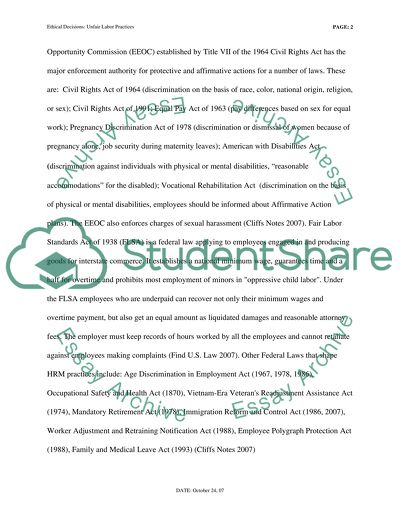Cite this document
(Unfair Labor Practices Case Study Example | Topics and Well Written Essays - 2000 words, n.d.)
Unfair Labor Practices Case Study Example | Topics and Well Written Essays - 2000 words. https://studentshare.org/ethics/1542699-ethical-decision-unfair-labor-practices
Unfair Labor Practices Case Study Example | Topics and Well Written Essays - 2000 words. https://studentshare.org/ethics/1542699-ethical-decision-unfair-labor-practices
(Unfair Labor Practices Case Study Example | Topics and Well Written Essays - 2000 Words)
Unfair Labor Practices Case Study Example | Topics and Well Written Essays - 2000 Words. https://studentshare.org/ethics/1542699-ethical-decision-unfair-labor-practices.
Unfair Labor Practices Case Study Example | Topics and Well Written Essays - 2000 Words. https://studentshare.org/ethics/1542699-ethical-decision-unfair-labor-practices.
“Unfair Labor Practices Case Study Example | Topics and Well Written Essays - 2000 Words”. https://studentshare.org/ethics/1542699-ethical-decision-unfair-labor-practices.


